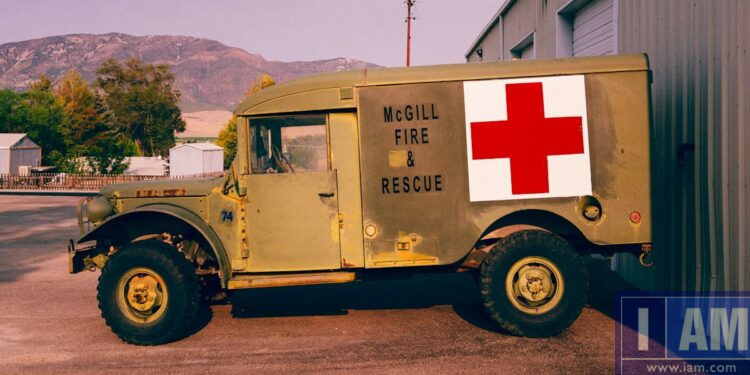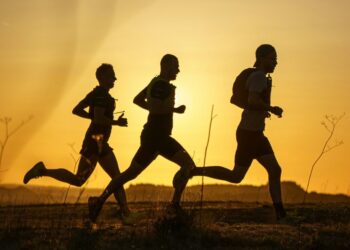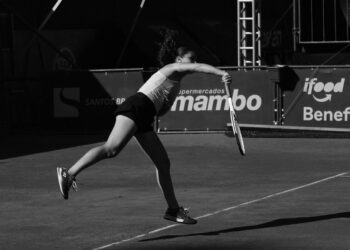DISCLAIMER: This article provides educational information based on current sports science research. This is not medical advice. Always consult qualified healthcare professionals for medical concerns, injuries, or before starting any recovery protocol. If your athlete experiences severe pain, swelling, numbness, or any concerning symptoms, seek immediate medical attention.
If your teen athlete limps off the field on a Friday night. Or, plays through body soreness during a Saturday morning session. Or, maybe even crashes on the couch on almost every Sunday afternoon. Then, this might sound familiar. High school athletes will often face unique recovery challenges. They might be expected to juggle multiple games weekly, along with their growth spurts, some academic stress, and often inadequate knowledge of recovery principles. It is important to have an understanding when to use ice versus heat. To know about when and how much sleep actually matters. Also important is which recovery methods that science supports. This knowledge might mean the difference between them eventually earning a college scholarship or a, in a brief moment, suffering a season-ending injury.
Sleep: The Non-Negotiable Foundation
The Research is unequivocal. Sleep, the rest that our body needs, is the most powerful recovery tool available. Teen athletes on average need 8-10 hours nightly. This is not the 5 to 6 that many teenagers get. During deep sleep, a person’s growth hormone peaks, muscle tissue is repaired, and bones are strengthened. This is especially critical for high schoolers who happen to still be growing.
Sleep deprivation increases injury risk by 70% in athletes getting less than 8 hours nightly. Reaction times slow, coordination suffers, and decision-making often deteriorates. This might create a perfect storm for ACL tears or concussions or any other injuries. One Stanford study found that basketball players who extended their sleep to 10 hours improved their overall sprint times and their shooting accuracy by 9%.
Practical application: Try to set a non-negotiable bedtime, even during playoff runs. Remove phones from bedrooms because blue light is supposed to suppresses melatonin. This might delay sleep onset by 30-45 minutes. If early morning practices are mandatory, then you might advocate for later start times with coaches or ensure afternoon naps. Or, you might turn in even earlier. I really enjoyed my daily, morning high school runs before regular classes each day.
Ice: The Acute Injury Response
Ice remains the gold standard for acute injuries. My grandfather swore by it and it was always his first goto advice for anyone injured. Treat those injuries with ice within the first 48 to 72 hours after incurring the original injury. The RICE protocol (Rest, Ice, Compression, Elevation) reduces blood flow, limits swelling, and can protect from secondary tissue damage. Apply ice for 15-20 minutes every 2-3 hours during the acute phase.
However, recent research challenges any prolonged icing. After 72 hours, continued ice application may actually delay healing process. It likely does this by restricting the inflammatory response that is necessary for tissue repair. Ice can also temporarily reduce strength and coordination. That would make it counterproductive to use immediately before any competition.
When to ice:
- Immediately after an acute injury (for example: use on sprains, strains, or impacts)
- Post-game for known problem areas (for example: use on pitcher’s shoulder, runner’s knees)
- When swelling is visible or increasing
- Never apply ice directly on skin. Always use something as a thin barrier between the ice and the skin. (for example: use a thin towel barrier)
Heat: The Circulation Enhancer
Heat therapy increases blood flow. This type of therapy delivers nutrients and increasingly removes metabolic waste. It’s most effective for chronic issues. These can include muscle tension but also pre-activity preparation. Do not ever use this for acute injuries where it would increase the amount of swelling.
Heat works best after 72+ hours post-injury or for ongoing, chronic stiffness. A 104-106°F bath for about 15-20 minutes should improve muscle flexibility and reduce muscle soreness. For Pre-competition, use of a heat application can improve performance by increasing the muscle’s temperature and its neural transmission speed.
When to heat:
- Chronic muscle tension or stiffness
- Before the main athletic activity for injury-prone areas but after a proper warm-up activity
- 72+ hours after injury when swelling has already subsided
- Never use on numb areas or with any impaired circulation
Contrast Therapy: The Best of Both Worlds
Alternating hot and cold exposure, this is contrast therapy. It may offer superior recovery. The alternating vasoconstriction and then vasodilation of your blood vessels creates a “pumping” effect. This pumping effect in effect flushes metabolic waste while simultaneously delivering fresh nutrients to your body’s cells. Studies have shown reduced muscle soreness and faster strength recovery by using contrast therapy. One thing that I was told by an adult when I was growing up is that often we can recognize athletes by their increased ability to recover and heal relatively faster than other people.
The Protocol: Start with 3 to 4 minutes heat. Then, apply 1 minute of cold. Cycle, repeating this for 3 to 5 cycles. Always end with applying the cold to minimize any inflammation inflammation.
I’m not a doctor, or even a health professional, but I believe that using something like the over the counter medications such as using ben gay, icy-hot, or biofreeze on some sore body part gives the similar body sensation of this process. I’m not sure that it actually mimics the whole process though.
Active Recovery: Movement as Medicine
Complete rest isn’t always optimal. For example, after getting a shot my dad would almost always have me do some yard work before going inside the house. Likewise, Light movement for say 20 to 30 minutes at a 30-50% intensity level enhances recovery better than just passive rest alone. Swimming, cycling, or yoga can also increase blood flow without the resulting impact stress to your body. This “active recovery” reduces your next-day soreness and it helps maintain your mobility.
Warning Signs: When Recovery Is Not Enough
Seek immediate medical attention for:
- Numbness, tingling, or any loss of sensation
- Severe swelling or any deformity of shape
- Inability to bear any weight
- Pain that worsens despite you getting rest
- Persistent pain beyond expected the recovery timeline
Watch for overtraining symptoms:
- Declining performance despite training
- Chronic fatigue or irritability
- Frequent illness or slow-healing injuries
- Disrupted sleep patterns
- Loss of appetite or unexpected weight changes
Creating a Recovery Routine
Effective recovery is not about choosing between sleep, ice, or heat. Effective recovery is strategically combining these methods:
Daily: 8-10 hours sleep, proper hydration (half body weight in ounces), balanced nutrition
Post-competition: Ice acute areas (15-20 minutes), contrast bath for general soreness, protein within 30 minutes
Off days: Active recovery session, heat for chronic tight spots, extra sleep
Weekly: At least one complete rest day, assessment of any persistent pain
Teen athletes will often feel invincible. I know I did despite any evidence otherwise. But, their still-developing bodies will likely need more recovery, and not less. Parents must advocate to their student athletes to get adequate recovery time. Parents may even have to advocate against pressure from coaches or the athletes themselves.
Remember: professional athletes will prioritize their own recovery just as much as their training. Your high schooler deserves the same consideration, with keeping an eye out for their longer career that remains ahead of them.


















